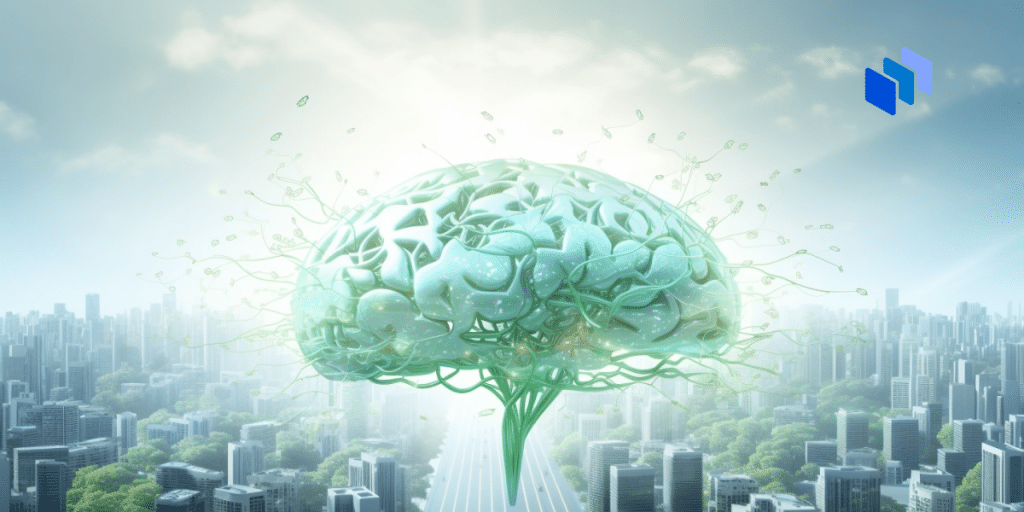In the vast landscape of modern information technology, two tiny yet powerful entities, electrons and photons, have played pivotal roles.
Electrons have long been the workhorses of data processing, while photons, in general terms, are utilized for data transmission.
However, the digital realm has evolved, and the limitations of electrons have become increasingly apparent — particularly as we push against the confines of the Von Neumann Bottleneck (which we’ll discuss below) .
In this article, we explore how photonic computing is reshaping the world of artificial intelligence (AI), shedding light on the transformative potential of photons.
The Challenge of Electrons
Electrons, though fundamental to data processing, face significant challenges. One of the most critical issues is electrical resistance, which hampers data communication speed and quality and results in energy wastage through heat generation.
Photons, on the other hand, are massless and travel at the speed of light in a vacuum, offering energy efficiency and environmental friendliness. This inherent advantage of photons has led to their adoption for data communication.
Despite this transition, electrons continue to play a crucial role in data processing due to their reliable digital infrastructure. However, as artificial intelligence demands increasingly complex computations, the limitations of electron-based processing become apparent.
The Von Neumann Bottleneck
Modern artificial intelligence relies on the processing of vast amounts of data stored in memory. The separation of processing from memory in the current digital architecture creates the “Von Neumann Bottleneck,” — a crunchpoint where it doesn’t matter how much processing power you have at your disposal, you will still be trapped by time spent accessing memory at some point — which leads to significant communication overhead.
An analogy might be that you can throw as many parallel processors at a problem as you like, but you’ll still be hampered if each calculation needs to pass through a serial processor at some point.
While photons handle external communication, electrons are responsible for vital internal communication, consuming substantial energy and hindering the acceleration of extensive AI calculations.
Photons: The Game Changer?
In stark contrast to electrons, photons offer superior communication speed and energy efficiency, and they possess a unique property of electrical neutrality. Photons can move through each other’s paths without interaction, enabling multiple simultaneous signals to be managed through glass fibers. This characteristic — one that can get past the Von Neumann bottleneck — empowers optical computers to perform numerous calculations concurrently, presenting exciting opportunities for parallel processing in extensive AI computations.
The Transition to Photonic Computing
Achieving photonic computing necessitates substituting current digital electronic processing systems with photonic components. Researchers are actively working on this transition, with a growing focus on conducting computations in the analog realm. In this approach, data is represented as continuous signals, conveyed through laser light transmission, and processed using specialized photonic computing cores. A notable example is a recent breakthrough by MIT scientists, who demonstrated the capabilities of photonic computing in solving AI tasks with remarkable processing speeds.
Hybrid Systems: Combining the Best of Both Worlds
One primary challenge in transitioning to photonic computing is the inability of photonic components to store memory or provide instructions, unlike their electronic counterparts.
To overcome this challenge, researchers are exploring hybrid systems that combine photonic and electronic computing. In this setup, photonic components handle computationally intensive tasks, while electronic components manage memory storage.
An essential requirement for these systems, however, is the seamless exchange of data between these two domains. While pursuing this goal, MIT researchers have recently achieved a breakthrough by introducing a system known as “Lightening.” This system serves as a reconfigurable smart network interface card, facilitating the smooth and efficient transfer of data between these components.
Advantages of Photonic Computing for AI
Photonic computing offers a multitude of advantages for AI. It excels in high-speed data transmission due to the light-speed movement of photons, reducing latency and enabling real-time AI processing.
Energy efficiency is a standout feature of photonic computing as photons, being massless, result in minimal energy loss during data transmission, making photonic systems cost-effective and environmentally friendly.
Additionally, photonic computing is highly proficient in parallel processing, as photons can move through each other without interference, a crucial asset for tasks requiring extensive parallel computation, such as deep learning and complex simulations.
The scalability of photonic systems is remarkable, as they can easily handle larger data loads to address the increasing computational demands of AI. Furthermore, these systems generate less heat and are less prone to electromagnetic interference, which significantly enhances their reliability. With their high bandwidth capacity, photonic computing excels in AI applications that involve processing extensive datasets or require long-distance data transmission.
Challenges Ahead
While photonic computing holds immense potential, several challenges need to be addressed. The design and manufacturing of photonic components, such as waveguides, modulators, and detectors, require high precision, which can be costly and technically demanding. Many photonic computing technologies are still in the research and development phase and have not reached full technological maturity. Developing scalable and reproducible manufacturing processes for photonic components and systems remains a significant challenge.
Photonic Computing Versus Quantum Computing
Quantum computing, much like photonic computing, incorporates photons as a fundamental element in its computational framework. Nonetheless, these two technologies are fundamentally distinct regarding their underlying principles, goals, and use cases. Photonic computing relies on optical principles for data processing, whereas quantum computing harnesses quantum phenomena to address intricate problems more effectively.
Photonic computing can achieve significantly higher processing speeds than traditional electronic computing and, in specific scenarios, even surpasses quantum computing in terms of speed. On the contrary, quantum computing possesses the potential to address challenges that are currently beyond the capabilities of even the most advanced classical computers.
The Bottom Line
The journey toward photonic computing is promising, with the potential to revolutionize the world of artificial intelligence. Photons, with their remarkable characteristics, offer an efficient and sustainable alternative to electrons for data processing.
While challenges remain, researchers and engineers are actively working to address them, unlocking the full potential of photonic computing. The future of AI computing may indeed be lighter and brighter, thanks to the power of photons.







